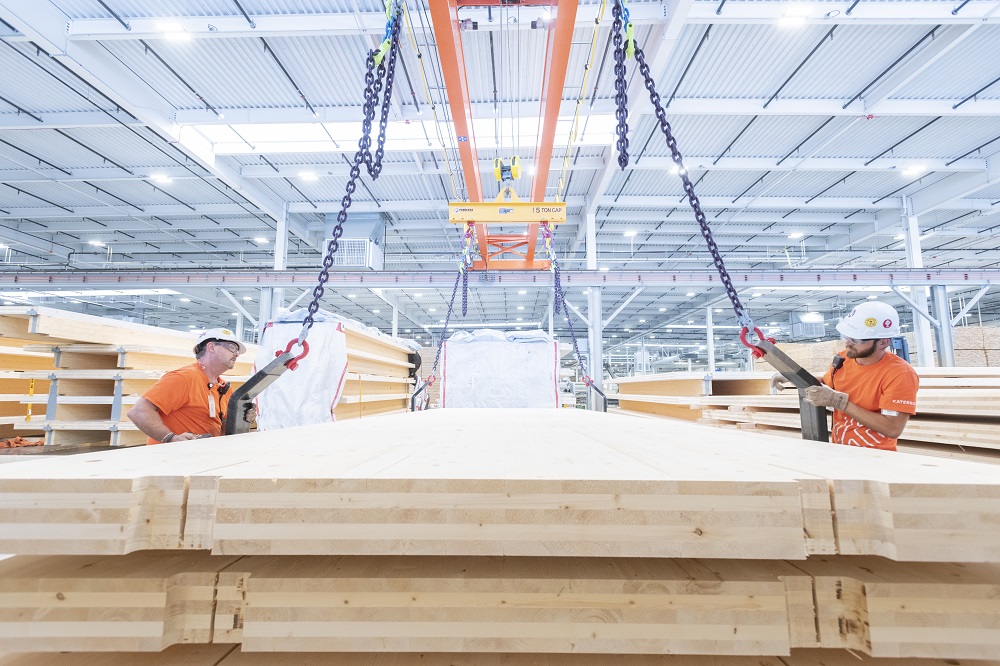via USGBC
In 2015, a study by Booz Allen Hamilton, prepared for the US Green Building Council (USGBC), expected Green Construction would account for 1/3 of all construction in the year 2018 and LEED would directly account for $29.8 billion of GDP. Being that it’s 2018 this year, we thought it would be pertinent to share the latest data from the USGBC to see how LEED construction was being used in states across America.
The USGBC recently released their 2017 data for the Top 10 US States for LEED construction, which is sorted by Gross Square Footage per Capita. That ranking system allows them to get a fair comparison of states, despite differences in population and number of buildings.
"As the U.S. Green Building Council celebrates 25 years of market leadership and growth, we know how important green building practices and certifications are to ensuring a more sustainable future for all," said Mahesh Ramanujam, president and CEO, USGBC in a press release. "…LEED is a proven economic development tool and method of meeting carbon reduction targets, reducing waste, energy and water consumption, and more. By measuring success on a per capita level each year, this list reflects the personal and individual impact of these states' efforts…”
According to the press release, the 2017 Top 10 list has the highest average square footage at an average of 2.9 square feet per resident. The 2017 list did not appear to show significant growth for LEED buildings in many of the states over 2016’s Top 10 list. For example, California’s and Virginia’s Certified Gross Square Footage (GSF) was stagnant year over year, and Colorado’s numbers dropped by around 4 million GSF. Massachusetts, Illinois, and New York saw large increases, however.
Nevada, Washington, and Texas fell off the Top 10 list in 2017, and Hawaii, Minnesota, and Georgia took their place. Massachusetts remained number 1 for the second straight year and Illinois remained in third place. New York jumped from fourth place in 2016 to second place in 2017.
2017 Top 10 States for LEED
10. Colorado
Certified Gross Square Footage (GSF): 11,397,964
Number of Projects: 76
GSF per Capita: 2.27
9. Virginia
Certified Gross Square Footage (GSF): 18,589,482
Number of Projects: 152
GSF per Capita: 2.32
8. California
Certified Gross Square Footage (GSF): 89,258,519
Number of Projects: 475
GSF per Capita: 2.4
7. Georgia
Certified Gross Square Footage (GSF): 23,638,051
Number of Projects: 71
GSF per Capita: 2.44
6. Minnesota
Certified Gross Square Footage (GSF): 13,018,056
Number of Projects: 47
GSF per Capita: 2.45
5. Maryland
Certified Gross Square Footage (GSF): 15,854,679
Number of Projects: 105
GSF per Capita: 2.75
4. Hawaii
Certified Gross Square Footage (GSF): 4,519,757
Number of Projects: 16
GSF per Capita: 3.32
3. Illinois
Certified Gross Square Footage (GSF): 43,363,065
Number of Projects: 135
GSF per Capita: 3.38
2. New York
Certified Gross Square Footage (GSF): 65,749,387
Number of Projects: 192
GSF per Capita: 3.39
1. Massachusetts
Certified Gross Square Footage (GSF): 29,338,378
Number of Projects: 130
GSF per Capita: 4.48
Check out the slideshow from the USGBC which highlights some of each state’s most impressive LEED projects below:











Like most of the other electric machines that have been announced previously, Volvo promises that this midsized, 14 metric ton excavator will have the same performance as a similarly sized diesel version. The X03 is currently in the concept stage, so Volvo does not have immediate plans to bring it to market, but it shows the possibilities that electronics on heavy machinery can allow for.